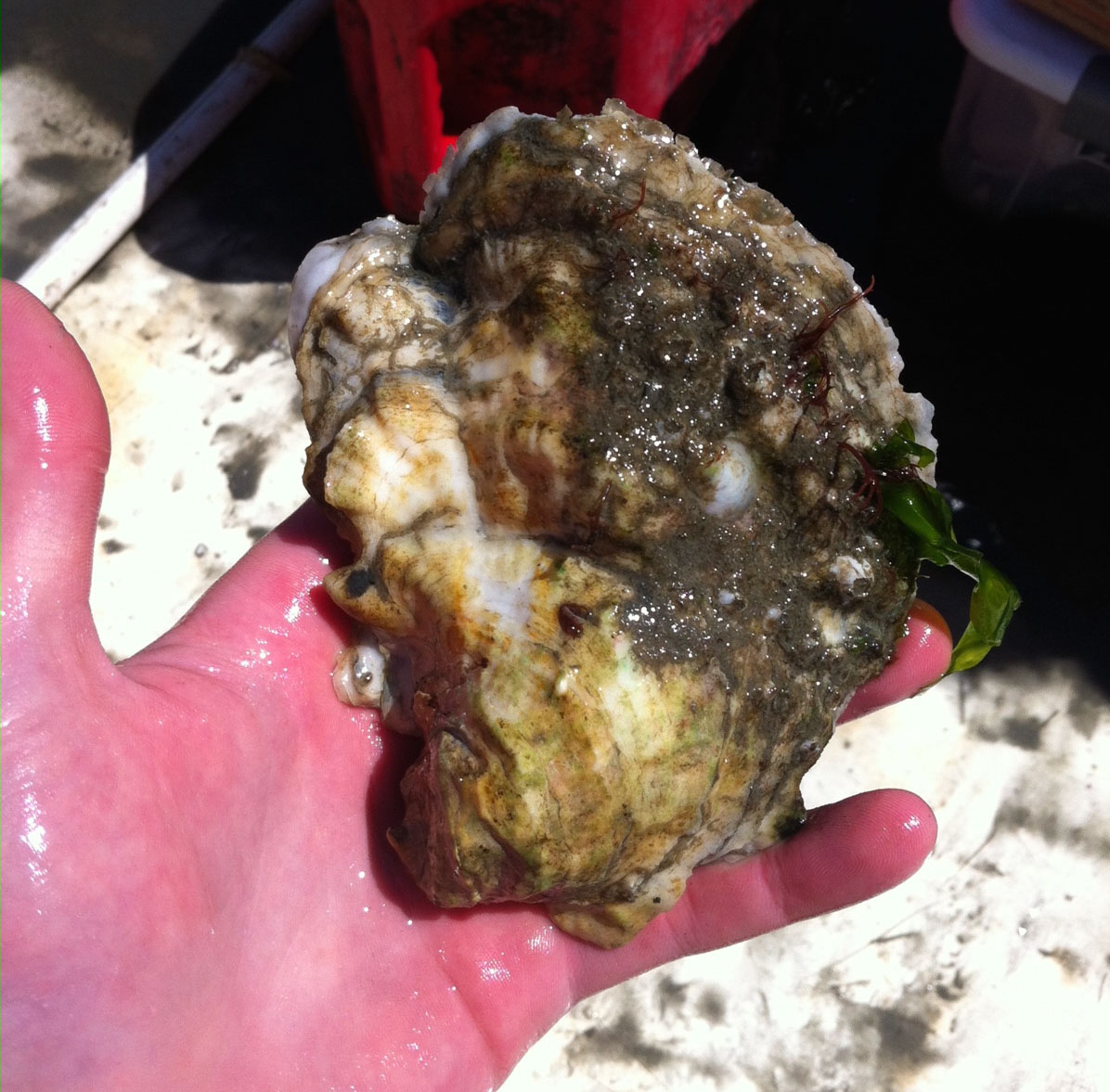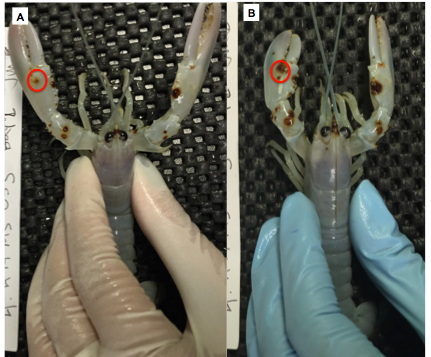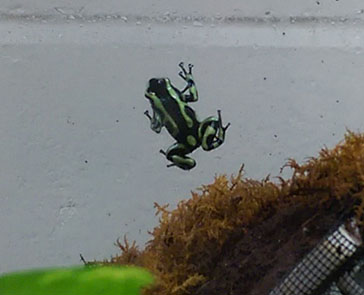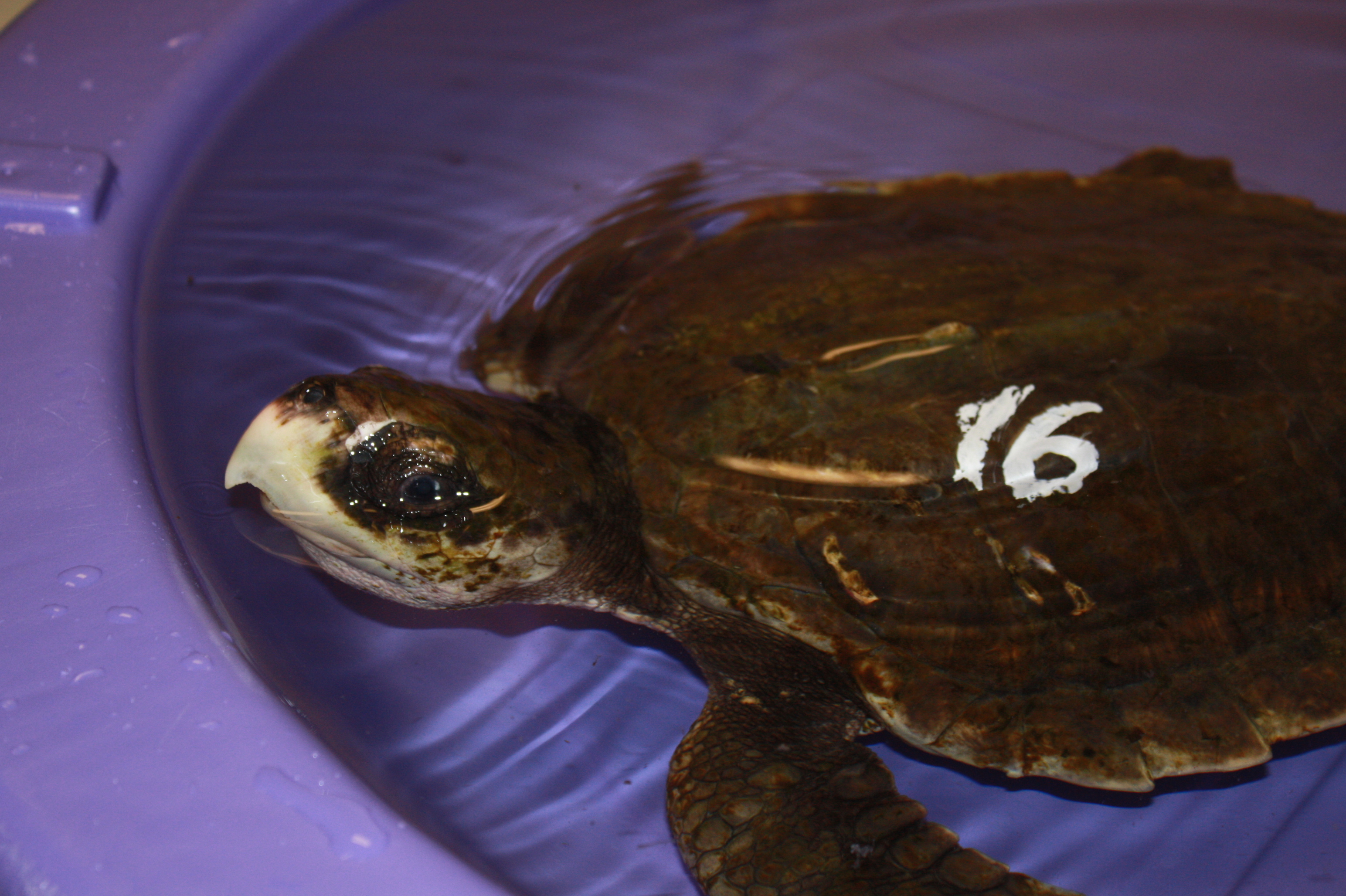Animal host associated microbiomes
The ecology of bacteria that live in association with human and animal hosts is an area of reaseach that is receiving national attention. Microbes associated with humans, for example, have been implicated in a huge number of areas associated with human health. The Bowen lab is examing the host associated microbiomes of several commercially important or highly endangered organisms.
 |
The eastern oyster, Crassostrea virginica, was the fourth most abundant mollusk harvested in the United States in 2014 in terms of weight, and was second highest in terms of revenue. While national landings experienced a large decline in the mid-1980’s and have not recovered since, the Massachusetts oyster fishery has been steadily increasing over the past 10 years, with 2014 landings more than four times greater than their previous 50 year average. In 2014, Massachusetts was the 7th largest harvester of C. virginica in the United States, and accounted for 2/3rds of the harvest in New England. In order to keep up with product demands, approximately 7050 square kilometers of coastal area have been approved for shellfish growth, an activity which may influence the benthic environment in these locations. Oyster reefs provide numerous ecosystem services including providing a physical substrate to support growth of other organisms, water filtration to remove excess phytoplankton resulting from nutrient enrichment, and increased carbon and nitrogen deposition to sediments where they can promote the microbially-mediated loss of nitrogen via denitrification. On the other hand, the incidence of food borne illness from consumption of raw oysters is increasing as more and more oysters are consumed, making them a potential public health hazard. We are striving to understand both the pluses (with regard to nutrient removal) and the minuses (with regard to increasing abundance of pathogenic bacteria of the burgeoning MA oyster aquaculture industry. |
 |
The American Lobster, Homarus americanus, supports a valuable commercial fishery in the Gulf of Maine, with landings totaling over half-billion dollars in 2014. While landings are at historic highs, the southern extent of this fishery has recently come under threat, with lobster shell disease being one potential driver. This disease occurs when bacteria consume the lobster cuticle resulting in deep lesions on infected lobsters. Lobster shell disease first appears as melanized spots on the epicuticle. These spots quickly develop into shallow lesions on the exocuticle that ultimately penetrate into the endocuticle and eventually cause ulceration. Due to the physical severity of this disease, lobsters even mildly affected with shell disease are generally considered unmarketable due to the grotesque appearance of their shells, thus affecting the value of this incredibly valuable and culturally iconic commercial fishery. The recent increase in shell disease highlights the importance of understanding the ecological dynamics of this disease. Despite the importance of shell disease to the health of the American Lobster and the importance of this fishery to coastal economic sustainability, the bacteria responsible for lobster shell disease have not yet been fully identified. Initial investigation of the bacteria associated with lobster shell disease identified a few key members of the shell microbiome, but much more work is needed to understand the underlying causes and mechanism of spread for this disease. Working with Michael Tlusty at the New England Aquarium's Anderson Cabot Center for Ocean Life, we have been studying the bacteria associated with lobster shell disease to better understand how this disease moves across lobster shells and, ultimately, across populations in the wild. |
 |
Global populations of amphibians have been on the decline due to a pathogenic fungus, Batrachochytrium dendrobatidis (Bd). This pathogen acts on the skin of amphibians, primarily disrupting osmotic balance and likely leading to mortality. While Bd has a high mortality rate, many species possess, to varying degrees, resistance to Bd infection and this differential susceptibility may be due to amphibian-associated microorganisms. Microbial populations associated with the skin of amphibians can provide protection against Bd infection by the production of anti-fungal metabolites, conferring resistance that supplements their own immune system. Understanding the interactions, both positive and negative, between microorganisms and their host is paramount to understanding disease progression and susceptibility. In this project, in collaboration with Doug Woodhams, we seek to understand the interactions between poison arrow frogs (Dendrobates spp.) and the micro- and mycobiomes and how they confer protection and promotion of Bd infection. |
 |
Kemp’s ridley turtles (Lepidochelys kempii) are a critically endangered species of sea turtle that strand every fall from cold-stunning, or hypothermia, on Cape Cod, Massachusetts. An average of half of these turtles per cold-stun event present with respiratory abnormalities during rehabilitation at the New England Aquarium (NEAQ). We are striving to understand how the bacterial and fungal communities play a role in the health of these animals as well as across disease states, such as pneumonia, and immunocompromised conditions, such as cold-stunning. We are also interested in evaluating the gastrointestinal microbiome as an indicator of disease state. Understanding the effects of hospitalization and antibiotic therapy on the respiratory microbiome, as well as comparing results across different diagnostic approaches and body sites, may lead to the improvement in the medical management of sea turtles in rehabilitation. |